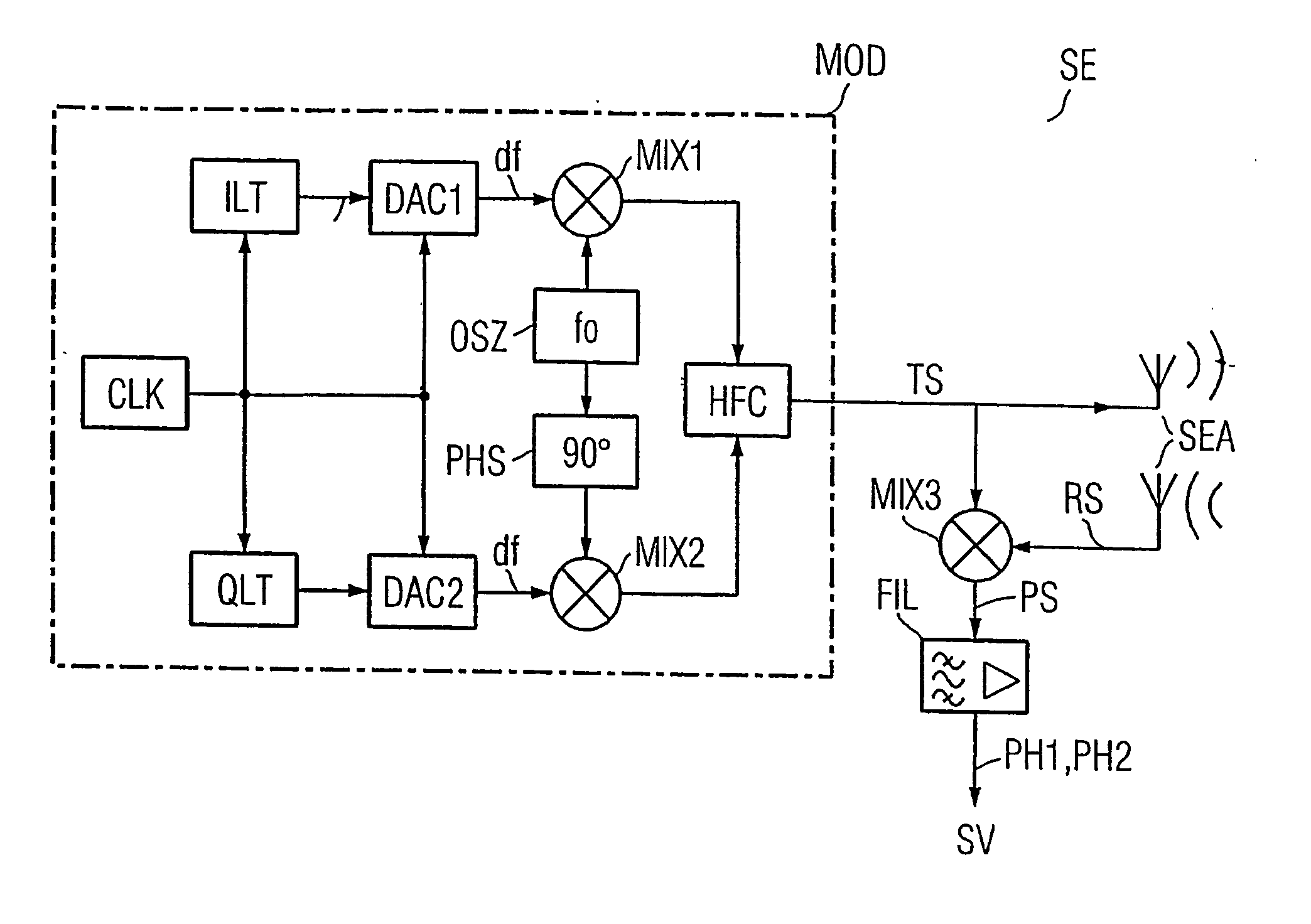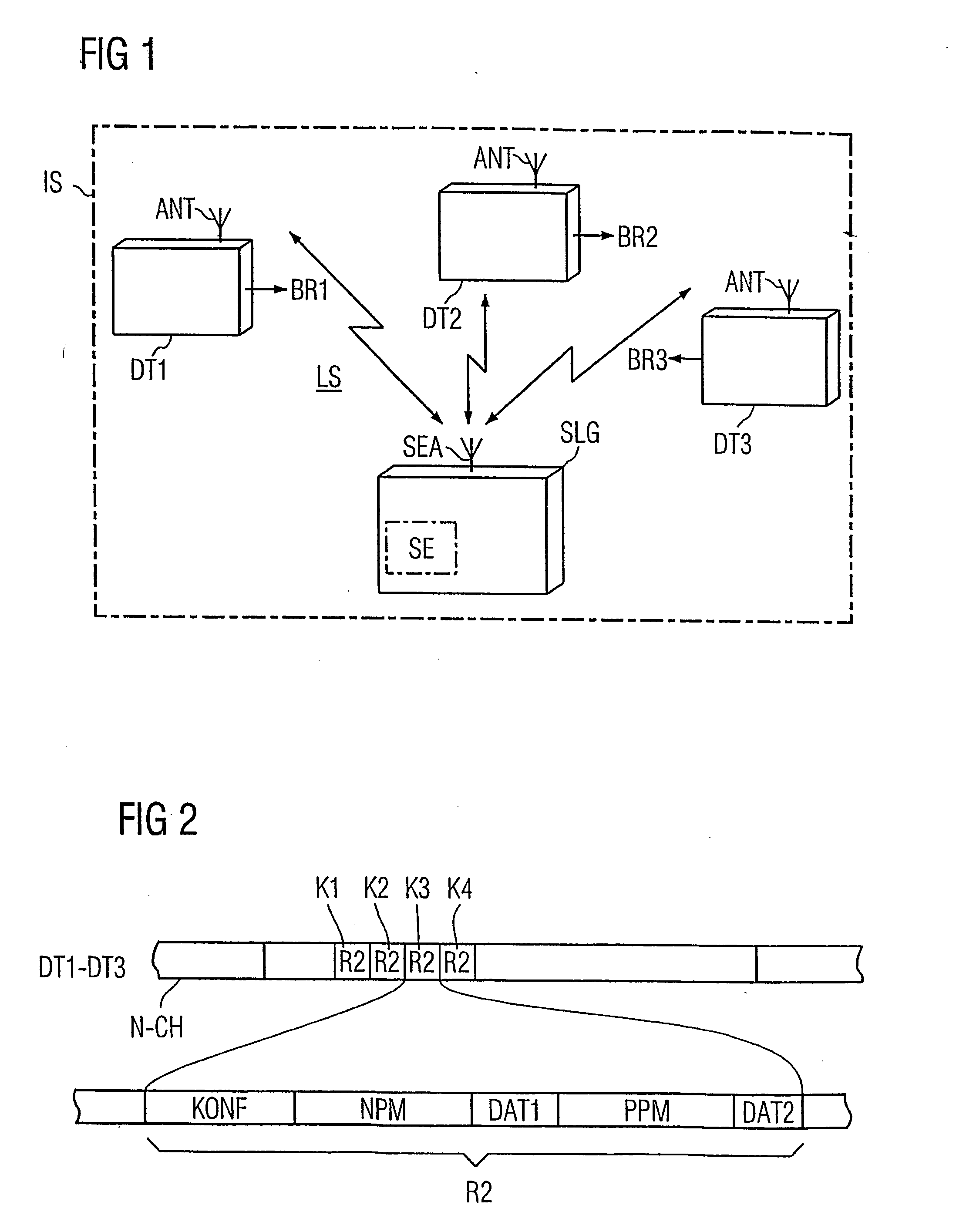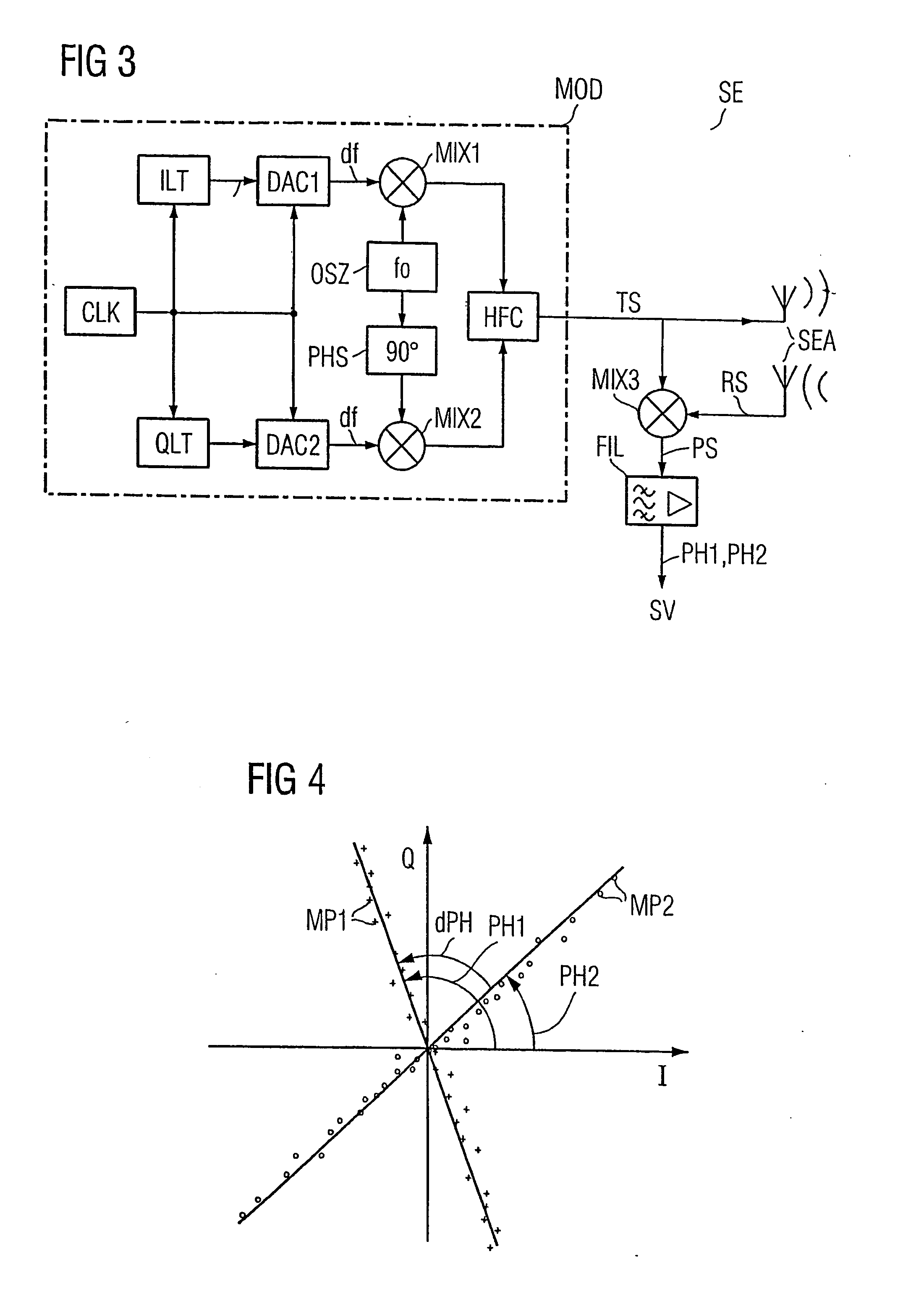Method for determining the distance between a base station and a mobile object, in addition to a base station and identification system for a method of this type
- Summary
- Abstract
- Description
- Claims
- Application Information
AI Technical Summary
Benefits of technology
Problems solved by technology
Method used
Image
Examples
Embodiment Construction
[0027]FIG. 1 shows an example of an identification system according to the present invention. The exemplary identification system includes a base station SLG (which can be a read / write device) and a plurality of mobile data memories DT1-DT3. An wireless interface LS is provided between the data memories DT1-DT3 and the base station SLG The mobile data memories DT1-DT3 each move in the direction shown. The different possible movement directions BR1-BR3 of the mobile data memories DT1-DT3 are shown in the figure by way of example.
[0028] The data memories DT1-DT3 and the base station SLG each have an antenna ANT, SEA, respectively for data communication there between. In the base station SLG, the dash-dotted rectangle indicates a transceiver SE, which is used to implement the method according to the invention.
[0029]FIG. 2 shows an exemplary data structure corresponding to a transmission channel N-CH for communication between the mobile data memory DT1-DT3 and the read / write device SL...
PUM
 Login to View More
Login to View More Abstract
Description
Claims
Application Information
 Login to View More
Login to View More - R&D
- Intellectual Property
- Life Sciences
- Materials
- Tech Scout
- Unparalleled Data Quality
- Higher Quality Content
- 60% Fewer Hallucinations
Browse by: Latest US Patents, China's latest patents, Technical Efficacy Thesaurus, Application Domain, Technology Topic, Popular Technical Reports.
© 2025 PatSnap. All rights reserved.Legal|Privacy policy|Modern Slavery Act Transparency Statement|Sitemap|About US| Contact US: help@patsnap.com



